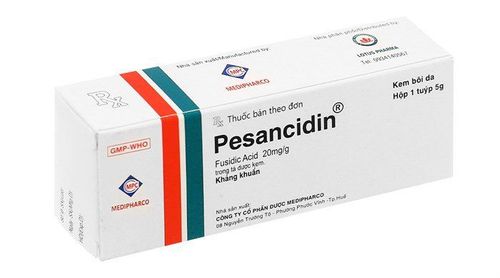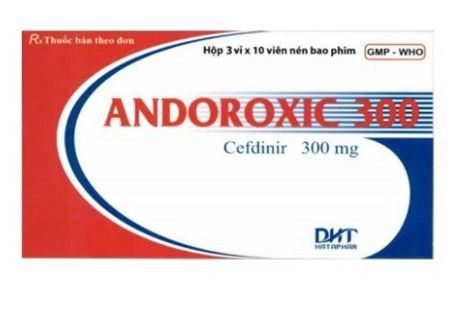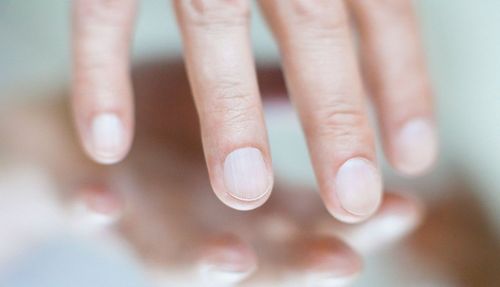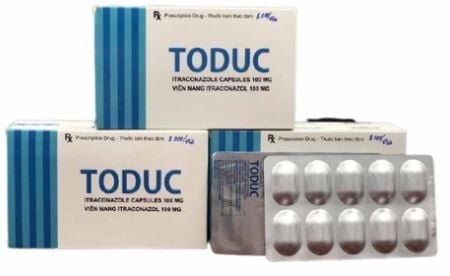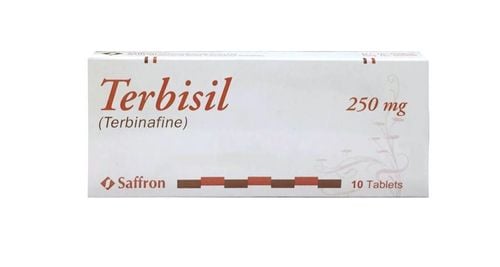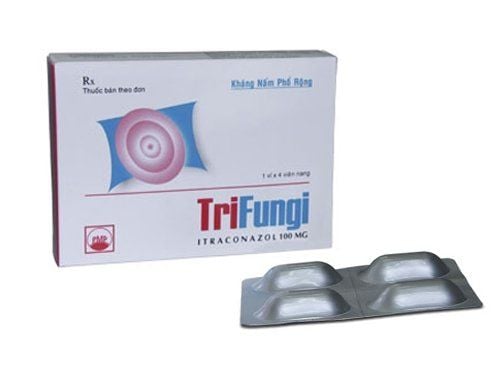This is an automatically translated article.
Manicure or toenail surgery, which includes local surgical interventions, can address nail lesions, especially when unresponsive to medical therapy or to correct structural deviations. Most cases of nail surgery often require simple techniques, but need to be precise and require careful care in the postoperative period.1. Indications of nail surgery
There are many indications for nail surgery, from infectious and inflammatory causes to cancer or trauma. Some of the common disease processes affecting the nail complex include onychomycosis, ingrown toenail, and nail hypertrophy as well as psoriasis, lichen planus, congenital nail dystrophy, and tumors.In addition, nail surgery is also commonly performed to aid in diagnosis, relieve pain, and correct or prevent anatomical deformities of the nail.
The following are nail problems that require surgery:
Periungitis: An inflammation of the nail folds, usually caused by trauma, such as an accidental tear of the skin that leads to an infection of the surrounding soft tissue. Inverted nail: The nail spines progress through the tissues around the nail, puncturing the skin and dermis components, causing inflammation, pain, and swelling. Warts around the nail. Nail injury. Hematoma under the nail. Myxoid cysts in the nail, pyogenic granulomas, fibroadenomas, glomus tumors and benign tumors in general. Malignant neoplasm of the nail apparatus.
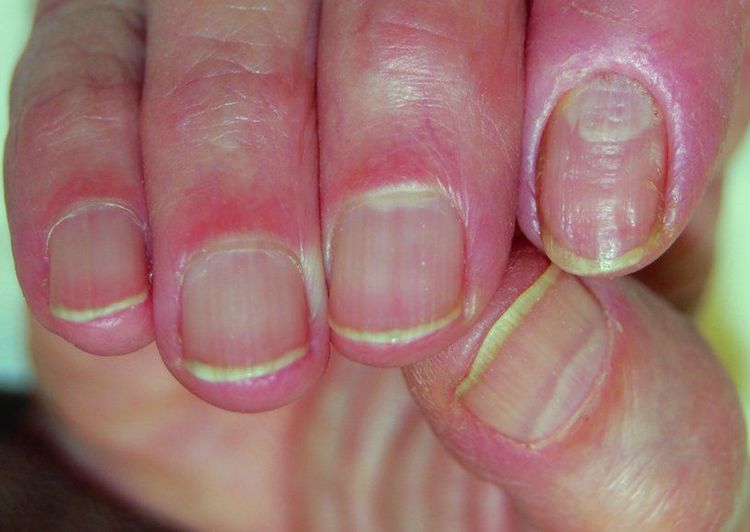
Phẫu thuật móng tay cũng thường được thực hiện cho bệnh nhân bị viêm quanh móng
2. Common nail surgery
2.1. Procedure Considerations for approach Nail interventional treatment options, including nail surgery must be individualized based on nail condition, extent of disease, presence of injury, and comorbidities.Accordingly, patients with predisposing factors for infection, such as uncontrolled diabetes, pre-existing methicillin-resistant Staphylococcus aureus infection, and immunocompromise, may require prophylactic antibiotics during the procedure. preoperative preparation.
Nail separation Nail separation is the most common procedure performed on the nail plate, which involves the separation of the body of the nail plate from the initial contiguous portions of the finger. Initially, the doctor may perform a separation of the nail to give the nail full contact before chemical or surgical removal.
On the other hand, nail remover when performing separation is used as an adjunct in the treatment of perennial fungal infections of the nail, such as chronic onychomycosis and acute bacterial infections. In addition, in nail trauma requiring nail separation, the physician may also use suction to assess the stability of the nail bed or release the subungual hematoma after unsuccessful aspiration.
Nail clipping Foundation is the germinal epithelium that makes up the nail plate by the continuous differentiation of basal cells. Accordingly, nail surgery is a process that uses chemicals or electrocautery to destroy the foundation substance. Complete removal of the living base layer will result in loss of the nail plate. Therefore, a new nail plate cannot be regenerated.
This is the most commonly performed nail surgery indicated when the nail is inverted or the nail is incised.
2.2. Nail Surgery Surgery for Periungitis The inflammatory part of the nail is defined by the nail walls, the distal cuticle attached to the nail plate and the nail bed. These components of the nail bed have a common function to prevent infection and inflammation to the proximal nail bed.
Treating peritonitis with emergency antibiotics is the least important thing in preventing permanent nail dystrophy. In case of acute infection that does not respond to antibiotic therapy within 48 hours, surgical management should be indicated. At this point, accumulated pockets of pus can appear and extend around the base of the nail and inflame the nail bed, possibly even separating the nail from the nail bed. Pressure necrosis may develop within 48 hours with consequent nail dystrophy which may be transient or permanent if surgery is delayed.
Thus, surgery for periungitis, the first step is to aspirate pus through the incision to drain the abscess. If the infection has spread under the distal nail, total excision of the base and distal nail will be performed to expose the nail. The base layer is then inspected and removed as necessary.
Postoperative care includes dressing change and moistening with sodium chloride solution or antiseptic solution. This process is done daily and continues until the pus drains out.
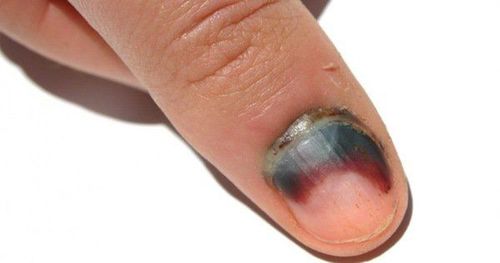
Tụ máu dưới móng tay cũng có thể được điều trị bằng phẫu thuật móng tay
Wart surgery Treatment of warts is sometimes difficult and recurrent is a controversial issue in some patients. Carbon dioxide laser interventions, pulsed dye laser ablation, and electrosurgery are reserved for treatment-resistant warts.
During surgery, the patient may experience pain due to edema occurring below the nail bed. If you want to intervene more thoroughly, sometimes you need to use anesthetic.
Surgery to repair nail trauma Accurate examination of the injured distal knuckle includes a local examination and radiographs to determine the presence of a fracture, to aid in wound exploration.
Thoroughly clean the wound site as well as harvest potential grafts. Skin grafts, when required, should also be scheduled if necessary. In the majority of cases requiring surgery for nail trauma, broad-spectrum antibiotics are used in the preoperative period.
Surgery for benign nail unit tumors. Infected granulomatosis surgery: Management of granulomas by excision or the use of silver nitrate. Surgeons often use an electrocautery device or a knife to perform a root resection of the lesion. The removed tissue is then biopsied to confirm the diagnosis.
Fibroid surgery: Therapeutic intervention is determined by the size and location of the lesion for local excision and the use of skin grafts or nail reconstruction.
Glomus tumor surgery: Small tumors are usually removed by creating a hole in the nail plate. An incision will be made through this hole, separating the tumor from the fibrous capsule, and making an incision in the nail bed tissue. Surgical treatment for larger tumors involves proximal nail clipping, the nail bed being incised and elevated from the periosteum to remove the tumor. Finally, a non-stick gauze will be placed over the wound to prevent the formation of an adhesive between the nail and the skin fold. Standard wound care is essential after surgery.
In summary, performing successful nail surgery requires a comprehensive understanding of nail anatomy and pathophysiology. Nail surgeons also need to be fully equipped with surgical techniques and instruments, preoperative assessment as well as wound care, and management of complications. These will help minimize discomfort for the patient, thoroughly treat the nail disease and restore the original function.
Please dial HOTLINE for more information or register for an appointment HERE. Download MyVinmec app to make appointments faster and to manage your bookings easily.




